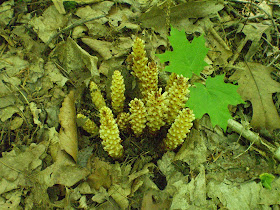Before leaving the area around the Sperry Farm/Darling house, I should say something about maps and other images since this particular area has a few extras you don't always get to "read."
About 50 years after Stiles published his book on the Regicide Judges, George Henry Durrie was busy painting landscapes of the area. Stiles wrote that the cleared meadows along the western edge of West Rock was known in 1661 as the “Ox Pasture,” and sure enough George “the Snowman” Durrie includes an ox in a painting of the lower end of the pasture.
Bear with me please; Blogger won't let me add the next images, so after several tries I'm giving it up for now...
About 50 years after Stiles published his book on the Regicide Judges, George Henry Durrie was busy painting landscapes of the area. Stiles wrote that the cleared meadows along the western edge of West Rock was known in 1661 as the “Ox Pasture,” and sure enough George “the Snowman” Durrie includes an ox in a painting of the lower end of the pasture.
We find that:“Born in Hartford, Connecticut, George Durrie was known as the "snowman" because of the many winter scenes he painted. He lived most of his life in New Haven and earned a reputation for rural landscape scenes, especially snow scenes, which he introduced as subject matter in American painting. His paintings "provide an excellent record of rural life in the mid-nineteenth century and his carefully recorded details of nature and foliage added authenticity to his depictions." ~ http://www.askart.com/askart/d/george_henry_durrie/george_henry_durrie.aspx
You'll remember that in Part One I wrote that Stiles says: “Let it be observed that at this time, about 3 or 400 acres westward of the town was cleared in a common field, called the ox pasture,” describing the land around the Sperry Farm. What Stiles doesn’t say is that these places may have already been cleared by Native Americans, New Haven originally known as Quinipiac, marked as such on Dutch and other early maps. The “ox pasture” may well have been a cleared meadow or “intervale,” maintained by Indian burning, just as were many high elevations where “the Indians always burned rings or tracts on those summits, to give a clear view for hunting deer…”
That's quite a number of acres cleared by 1661 or so, by a relatively small number of immigrants: "By 1640 a complete government had been established and the settlement, originally called Quinnipiac, was renamed Newhaven...(by) 1641 New Haven had grown into a community of approximately 800." http://www.cityofnewhaven.com/Mayor/History_New_Haven.asp
Bear with me please; Blogger won't let me add the next images, so after several tries I'm giving it up for now...
1915 map showing probable wood lot in Ye Olde Ox Pasture lands, 1934 aerial, crop of the quartz row from the '34 photo, 1965 aerial showing less pasture and more woods.
Will Blogger let me publish?? I'm clicking the button...
Will Blogger let me publish?? I'm clicking the button...



































































































